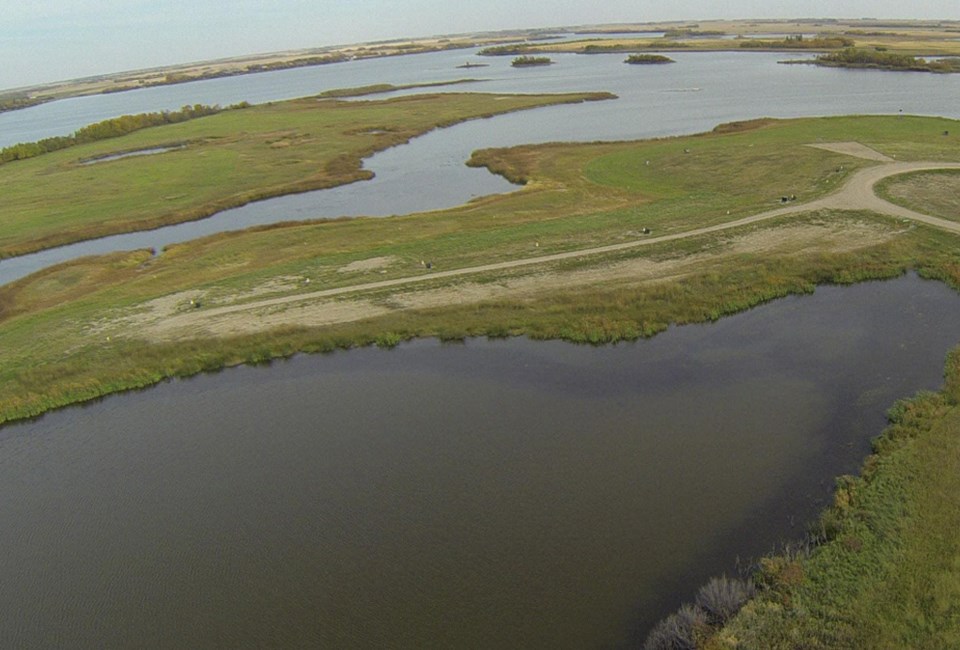HUMBOLDT – The Saskatchewan Health Authority has issued an advisory for Stoney Beach at Humboldt Lake due to microcystin being present in the water since July 29.
A spokesperson for the Saskatchewan Health Authority (SHA) said microcystins are a class of toxins produced by certain freshwater cyanobacteria, commonly known as blue-green algae. Exposure to microcystins can cause various health issues, including liver damage, nausea, vomiting, and diarrhea.
SHA said the development of algal blooms in waters used for recreational purposes is dependent on many factors that can be difficult to predict. Blooms can develop very rapidly under the appropriate conditions, and lakes that have never had a problem can change unexpectedly. Development of algal blooms and the presence of algal toxins may be localized to parts of a lake and therefore advisories are issued for specific beach areas rather than the whole lake. More information is available in the Healthy Beaches Q&A document and in the Blue Green Algae Fact Sheet available on the Healthy Beaches Program webpage.
The SHA said you can safely eat fish fillets in moderation from lakes with blooms. It is recommended to avoid consuming whole fish and trimmings, as toxins tend to accumulate in the liver. The edible muscle tissue is generally considered safe and unlikely to contain toxin levels that exceed normal consumption guidelines. Please see attached Blue-Green Algae Fact Sheet for more information
Stoney Beach has been sampled as part of the Healthy Beaches Program since 2021. Historical results can be accessed HERE via a link on the Healthy Beaches website. Currently, Stoney Beach is the only closed beach in Saskatchewan at the time the article was published. Regina Beach had been closed due to E.coli but has since been tested again and deemed safe to swim now.
Beaches are tested either weekly or bi-weekly said SHA. The Ministry of Health collaborates closely with the Saskatchewan Health Authority’s public health inspection offices and provincial and regional parks to identify popular public beach swimming areas for the program. SHA said these beaches are selected primarily based on their popularity, as busier beaches pose a higher potential risk. However, historical sample results, including past exceedances for E. coli and/or microcystin, are considered.
The interactive online beach map displays all the beaches included in the healthy beaches program. If a beach is not listed, it means it is not currently being sampled. However, if you have concerns such as algal blooms, you can report them to your local public health inspection office or through the ‘Report an Algal Bloom’ complaint form. Click here to submit a report. Beach water is tested for E. coli and microcystin.
Recreational water is considered to be safe for swimming and other in-water activities when: No single sample result is greater than 235 E. coli organisms in 100 milliliters (mLs) of water; and/or, Cyanobacteria or their toxins (microcystin) is less than 10 µg/L. At the time of testing on July 29, Stoney Beach had 75 µg/L.
The spokesperson for SHA said the program began in 2012. Every public beach within the province's jurisdiction has been assessed at least once since then. . Only the sampling results for beaches selected for the Healthy Beaches Program are posted to the website.
SHA said, "Before heading to the beach, people should regularly check the Healthy Beaches website for updates on the listed beaches. If you notice anything unusual, such as algal blooms or if someone falls ill after swimming, please report it. Concerns and complaints can be directed to your local public health inspection office or submitted through the ‘Report an Algal Bloom’ complaint form on the Healthy Beaches Program webpage.




